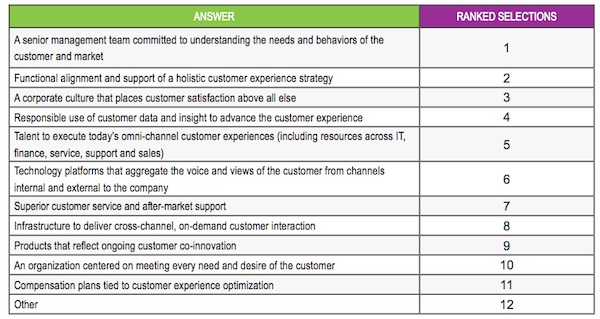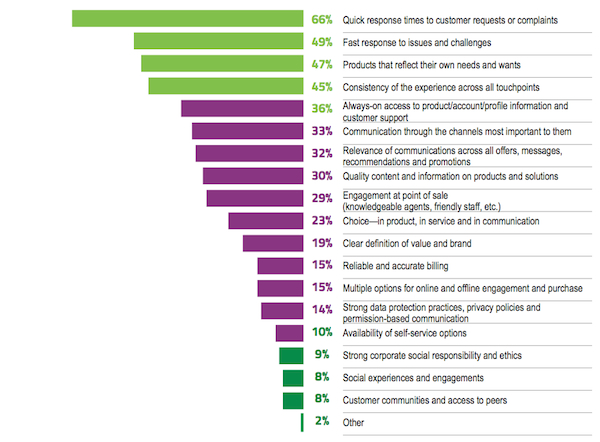2 Must-Read Takeaways for Brands Looking To Be More Customer-Centric
SAP report provides an in-depth look at the state of brand customer-centricity.
One of the biggest goals for most brands is to be more customer-centric. It’s one of the golden rules of marketing, and also one of the pillars on which momentology is based. However, while many seek to adopt customer-centricity as a culture, proving its value as a revenue generating strategy is an altogether different challenge.
What is the current state of customer-centricity for leading brands? A survey of more than 300 senior marketing executives at B2B and B2C organizations across North America conducted by SAP researchers found that 73 percent of marketers view customer-centricity as “critical to the success of their business.”
However this makes a striking contrast with the number of marketers who say their brands aren’t yet customer-centric enough. Only 11 percent of marketers strongly agreed with the statement that “we excel in delivering relevant, personalized experiences based on customer insight and analytics.”
Here are some key findings from SAP’s report:
- 73 percent of marketers view customer-centricity as critical to the success of their business and role at the company
- Only 14 percent of marketers say customer-centricity is ranked highly within their organization.
- Only 11 percent of marketers say that their customers would say customer-centricity is ranked highly within their organization.
- 66 percent of marketers say quick response times to customer requests or complaints are core to demonstrating customer-centricity.
- 22 percent of marketers highlighted people and expertise as a challenge for the business. With businesses requiring the right talent and the right culture to achieve success.
- 52 percent of marketers say that it is a ‘triple-P’ combination of people, processes, and platforms, that are needed to properly develop, manage, measure and continue the delivery of a great customer experience.
- 47 percent say products that reflect a customer’s own needs and wants are central to demonstrating an organization’s customer focus.
- 56 percent of marketers are only “moderately satisfied with their company’s ability to listen and respond to the needs of the customer”.
- 20 percent of marketers say that businesses as a whole have a comprehensive view of engagements and touchpoints across the stages of the customer lifecycle.
- 45 percent of respondents do not have a unified view of the customer, or a single version of customer truth.
- 10 percent of marketers are highly confident in their organization’s ability to leverage data and turn it into actionable intelligence.
What Does Customer-Centricity Mean For Businesses Today?
When asked what the most important attributes were for brands, as a measure of customer-centricity, a majority of marketers placed great value in having “a senior management team that is committed to understanding the needs and behaviors of the customer and market.”

Also important for brands is to have a “functional alignment and support of a holistic customer experience strategy”, as well as a corporate culture that places value on customer-centricity and the responsible use of data and insights to advance the customer experience.
Ingrid Lindberg, chief customer experience officer at Prime Therapeutics, spoke of the importance of customer-centricity for her brand:
“Customer centricity is an ever-moving target based on customer expectations, so it’s always a journey. Although we are exceptionally responsive, we are still forced to evolve as the definition changes. Luckily, we are agile and able to adapt to those changes quickly.”
Personalized Experiences
A key output for customer-centric brands highlighted in the study was in the ability for brands to deliver personalized experiences to build connections with customers on a unique one-to-one basis.
Sixty-three percent of marketers agreed that customer expectations for personalized experiences are higher than ever, but just 5 percent felt that their brands are “excelling in the delivery of a data-driven, personalized experience.” Twenty-eight percent of senior marketers felt their brands were able to “deliver a personalized experience, regardless of channel.”
“Engaging customers through a personalized, highly targeted approach is key,” said Erika Szychowski, senior vice president of marketing at Nine West. “Tailored content development and execution are incredibly critical to reaching customers today.”
Overall the survey formed a fascinating study of the areas which marketers felt their brands needed to focus on in order to deliver customer-centricity. Here’s an overview:

2 Key Takeaways For Brands Looking To Be More Customer-Centric
SAP’s researchers singled out two key takeaways for marketers looking to tackle the challenges around customer-centricity for brands.
1. Learn to Capitalize on Customer Engagement Opportunities
Customer-centricity needs provable value as a overarching strategy for brands. By instilling organizations with the ability to capitalize on new precedents in customer engagement, and embedding core principles of improving customer experiences in a committed way, organizations will pave the way to more rapidly responding to customer feedback, and ultimately stay ahead of customer needs and growing expectations.
2. Cross-Functional Partners And Integration Are Critical
Marketers were united in their identification of related core business functions, such customer service, sales, and IT, as being the stewards of providing an optimized customer experience. Rapid response rates, always-on access to products, and customer support is regarded as a key component of reaching long-term customer-centricity goals.